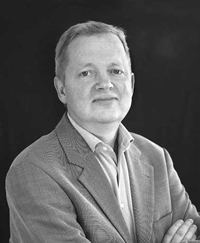 |
Jens Nørskov
Technical University of Denmark
Hougen Visiting Professor
Jens Nørskov received his M.Sc. degree in physics and chemistry in 1976 and his Ph.D. in theoretical physics in 1979 from Aarhus University, Denmark. After experience at the IBM T.J. Watson Research Center in Yorktown Heights, New York and the Nordic Institute of Theoretical Physics, Copenhagen, he joined the staff of Haldor Topsøe, Lyngby, Denmark, in 1985. In 1987 he received a special appointment as research professor by the Minister of Education in Denmark and joined the Technical University of Denmark, where he was appointed professor of physics in 1992. In 1993 he became director of the Center for Atomic-scale Materials Physics, and in 2006 the director of the Lundbeck Foundation's Center for Atomic-scale Materials Design. In addition he is chairman of the Nanotechnology Center at the Technical University of Denmark and of the Danish Center for Scientific Computing.
Professor Nørskov's research interests span the theoretical description of surfaces, catalysis, materials, nanostructures, and biomolecules. He has published approximately 325 papers, which are cited more than 17,000 times. In addition he holds 10 patents or patent applications. His accomplishments have been recognized by a number of awards and honors, including the ECOSS Prize, 1979; the Samuel Friedman (Rescue) Award, University of California, Los Angeles, 1989; the Danish Physical Society's Prize of 1990; the Villum Kann Rasmussen Award, 1991; the Innovation Prize at the Technical University of Denmark, 2005; and the Mulliken Medal, University of Chicago, 2007. In 2006 he was named Doctor Honoris Causa at the Technical University of Eindhoven. Professor Nørskov was elected a member of the Danish Academy for the Technical Sciences in 1987 and of the Royal Danish Academy of Science and Letters in 1996.
Hougen Lectures, Fall 2007
A MOLECULAR VIEW OF HETEROGENEOUS CATALYSIS
Tuesday, September 18, at 4:00 p.m. (refreshments at 3:45 p.m.)
Room 1800 Engineering Hall
Electronic structure methods based on density functional theory have reached a level of sophistication where they can be used to describe complete catalytic reactions on transition metal surfaces. This gives an unprecedented insight into these processes, and it allows us to pinpoint the origin of the catalytic activity of a metal in terms of its geometrical and electronic structure. Models are introduced to understand trends in adsorption energies and activation energies for elementary surface reactions from one transition metal to the next, and it is shown how trends in adsorption energies determine trends in the overall catalytic rates for a number of reactions. Finally, the possibility of using theoretical methods to provide input into the design of new catalysts is discussed.
THE ROLE OF QUANTUM SIMULATIONS IN MATERIALS SCIENCE AND DISCOVERY
Tuesday, October 23, at 4:00 p.m. (refreshments at 3:45 p.m.)
Room 1800 Engineering Hall
Molecular modeling on the basis of electronic structure calculations has undergone a revolution over the last decade. In particular, density functional theory calculations have achieved an accuracy and speed that makes it possible to begin treating the complexity of real materials and materials processes. The perspectives of this development will be discussed. One of the ultimate goals is to build a molecular engineering workbench: a computational environment for designing new materials with desired properties. The aim is to integrate experiment, theory, and computation in new and interesting ways. Some of the challenges to the methodology will be outlined: we need new methods to bridge length and time scales; we need higher accuracy and new, more efficient algorithms; we need to develop new, data-driven methodologies in materials science; and we need to explore and build a high-performance computer infrastructure.
